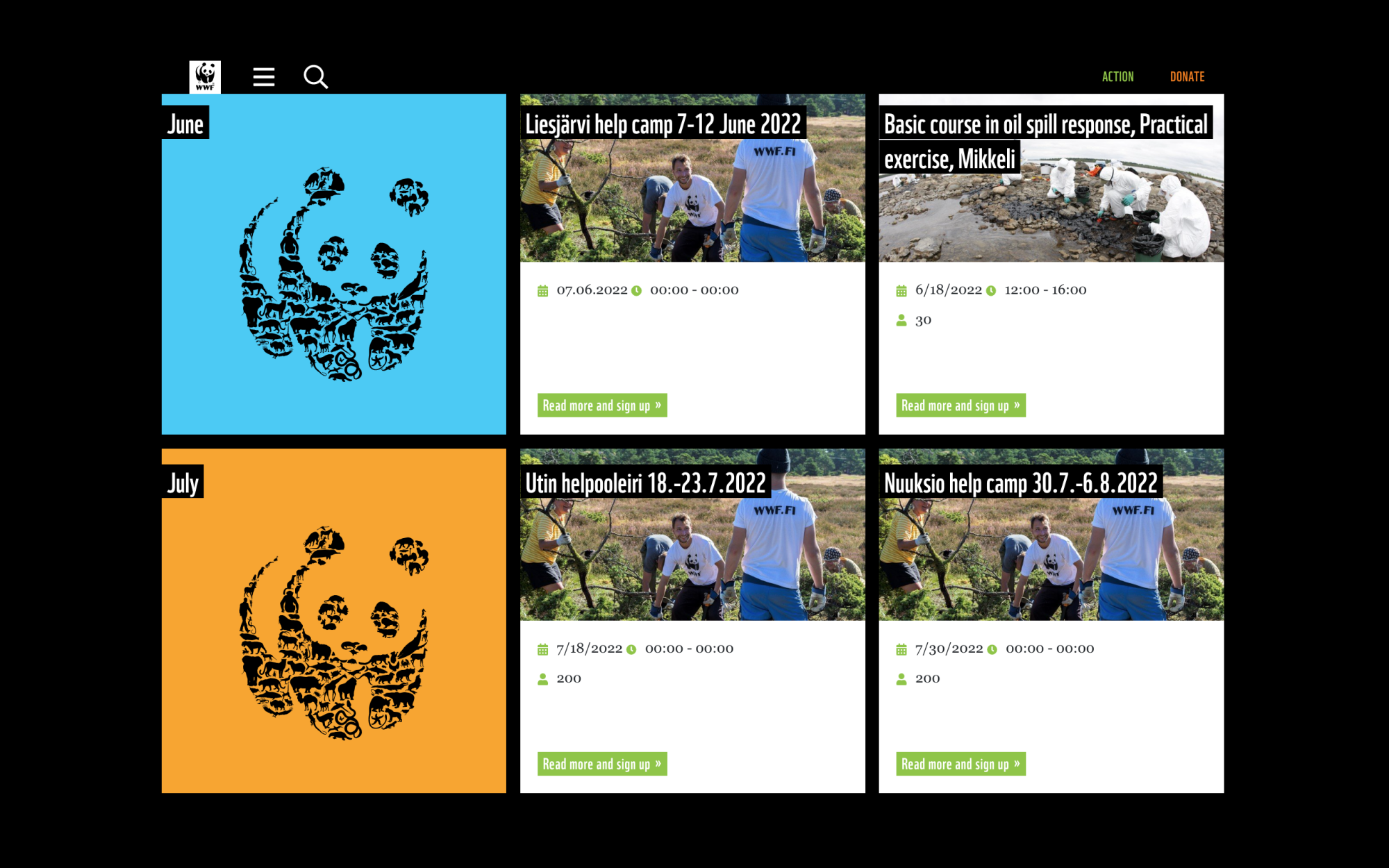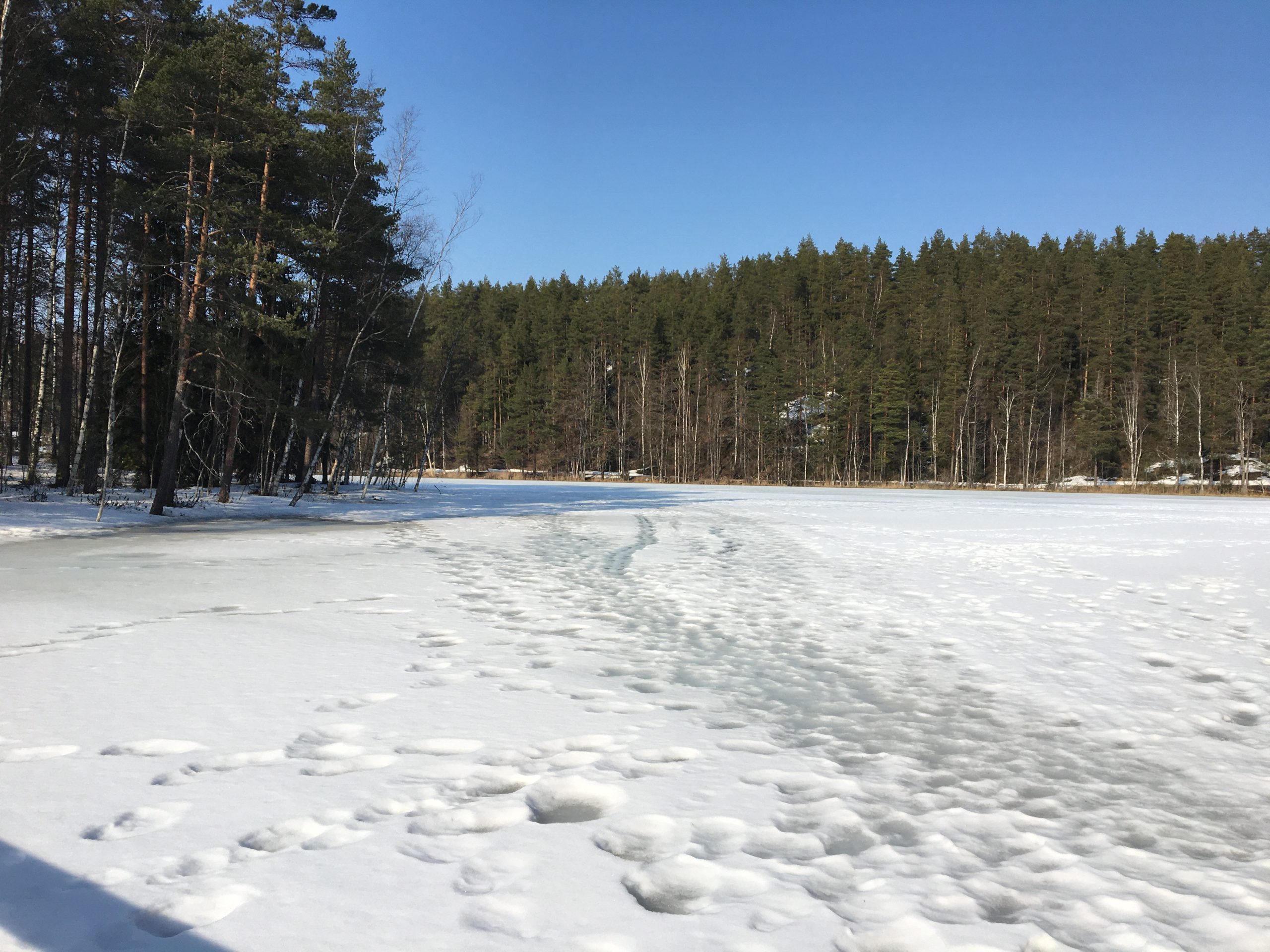This blog post reports on work-in-progress within the DfG course. This post is written by group 1C dealing with Metsähallitus’ brief on ‘The future of sustainable nature recreation’. Our group includes Kazuichiro Taira from Spatial Planning and Transportation Engineering programme, Iines Reinikainen from Creative Sustainability programme, Laura Monten and Kazuki Mori from Collaborative and Industrial Design programme.
Written by: Kazuichiro Taira
Overview of our research direction
As Kazuki mentioned, a feeling of “Accepting uncomfortableness” from the early stage of our project drove our team to identify key individuals and experts for conducting interviews and navigate our research direction with our interests smoothly. Our thinking process started by creating a research question that guided us further to narrowing the scope. The initial question was “How to increase people’s participation in sustainable environmental recreation (in Nuuksio)?. Within the second quarter of the research question was “What kind of regenerative (recreational) activities are planned around Nuuksio National Park with an educational approach?” Since our time and knowledge are limited, it creates a feeling of rushing and trying to catch what we do not know. We might be biased towards desktop research results, interviews, and visiting Nuuksio.
We conducted desktop research with eight interviews, site visits at Nuuksio, and launched surveys. We analyzed results from a few weeks of study to create stakeholder and causal loop maps. However, since the linkage of those results made new sub-questions to dig down deeper, we needed to conduct additional interviews. Thus, we have expected to gain detailed information from the WWF regarding the question. Indeed this interview revealed collaboration among WWF, main stakeholders, and actors in Nuuksio National park,
Do not Map Out Everything in the Stakeholder map
Based on what we gathered from background research and interviews, we used the system and causal loop maps to grasp different perspectives by making sense of how things are connected and interact with each other. First, we created a stakeholder map centered on Metsähallitus, and each stakeholder is linked with keywords or actions. The initial stakeholder map is large and complex. Therefore, we created segments that contain various stakeholders by keywords. This segmentation process filtered out our best research interests that can be coherent with our project brief. This process resulted in projecting three reminders from the project brief, background research, and fieldwork;
- Contradiction of biodiversity (conservation) and regenerative activities (locals & visitors)
- Levels of public participation and various volunteering.
- Collaboration across Nuuksio National Park, NGO (educational projects)
Later, we compressed the first stakeholder’s map into eight segments. As you can see in the stakeholder map, the linkages between each element are intertwined. NATURE EDUCATION, RECREATIONAL, and CONSERVATION segments are directly connected to Metsähallitus and the key focus area: Biodiversity in Nuuksio National park. I feel that digging down the undiscovered relationship between NATURE EDUCATION, NGO’S & CITIZEN MOVEMENTS, and CITIES OF HELSINKI AND ESPOO can bring valuable information to develop our project at a later stage. Of course, this can be biased, and our resources are limited to understand everything, but we reached a certain level of confidence. Thus, we move on to work on a causal loop map to discuss different viewpoints.
Causal Loop Map – Biodiversity in Nuuksio National Park
Then, we create a causal loop map based on an abstract stakeholders map to identify reactions between specific keywords and entities. A theme of this causal loop map is Biodiversity in Nuuksio National Park. NATURE EDUCATION, RECREATIONAL, and CONSERVATION segments from the stakeholder map are placed into our interest area with few changes. RECREATIONAL and CONSERVATION are integrated into Regenerative activities. We add Sense of community in the interest area since it might be able to influence the level of understanding and connect to Nature education. Besides Regenerative activities, all keywords and entities are color-coded according to whom it belongs. We considered that relevant policies (Ministry of Agriculture and Forestry Finland, 2022) and the implementation of EU strategy in Finland (SYKE, 2021), those deemed to imply there is less discussion about Regenerative activities. Thus, we can interpolate that Regenerative activities are still at the regime level (Geels, 2011).

WWF Raise Leaders of Regarative Activities on National Level
An interviewee with the WWF confirmed that their camping-based regenerative activities (WWF, 2022) are gaining popularity. People often could not join such activities since there are a limited number of in-take to join. These camping activities aim to train new leaders who will coordinate and manage such activities while educating people who join the activities. We considered that WWF is making a new network and community for regenerative activities on a national scale since the representative describes that they raise new leaders in different regions in Finland. More specifically, in the Uusimaa area, including Nuuksio National park, they are planning to hold camping-based regenerative activities during the summer. They expected to raise six new leaders this year. Furthermore, the interviewee was delighted that Metsähallitus and the Ministry of Environment founded their projects.
Critical reflection at the current stage
We are keen to know if there are more interactions among EDUCATION SECTOR, NATURE EDUCATION, and CITIES OF HELSINKI AND ESPOO from the stakeholder map. It can be not very objective, but we are sure there are more interactions, and it is just not that obvious at this point. It is fascinating to realize how our team drew the causal loop map since most of the green and red color-coded key worlds are located on the top and bottom sides of the map. We subconsciously describe such top-down power dynamics. It also makes sense to revisit the interest area because those keywords belong to different entities. Somewhat we created the interest area to balance out the power dynamics based on the difference of entities? It is important to note that we only know a few interactions of those organizations within our interest area. We shall keep our open minded to cope with uncertainties in our research and further development of our project.
Reference
Geels, F. W. (2011). The multi-level perspective on sustainability transitions: Responses to seven criticisms. Environmental innovation and societal transitions, 1(1), 24-40.
Ministry of Agriculture and Forestry Finland. (2022, April 7). Forest legislation in Finland. Maa- Ja Metsätalousministeriö; Ministry of Agriculture and Forestry Finland. https://mmm.fi/en/forests/legislation
SYKE. (2021, June 23). Finnish Environment Institute > Study: Finland has some read. Www.syke.fi; SYKE. https://www.syke.fi/en-US/Current/Press_releases/Study_Finland_has_some_readiness_for_imp(61057)
WWF. (2022, April 7). Liesjärven talkooleiri 7.-12.6.2022. WWF Suomi; WWF Suomi. https://wwf.fi/tapahtumat/liesjarven-talkooleiri-7-12-6-2022/
The DfG course runs for 14 weeks each spring – the 2022 course has now started and runs from 28 Feb to 23 May. It’s an advanced studio course in which students work in multidisciplinary teams to address project briefs commissioned by governmental ministries in Finland. The course proceeds through the spring as a series of teaching modules in which various research and design methods are applied to address the project briefs. Blog posts are written by student groups, in which they share news, experiences and insights from within the course activities and their project development. More information here about the DfG 2022 project briefs. Hold the date for the public online finale online 09:00-12:00 AM (EEST) on Monday 23 May!

